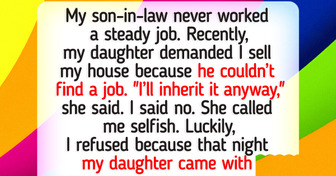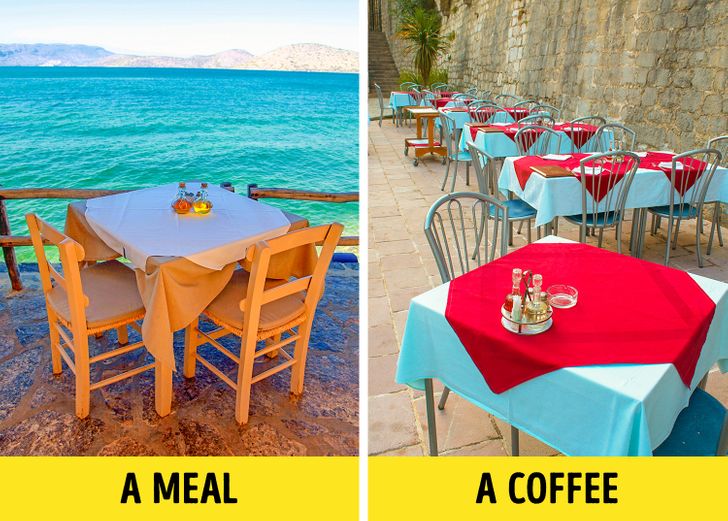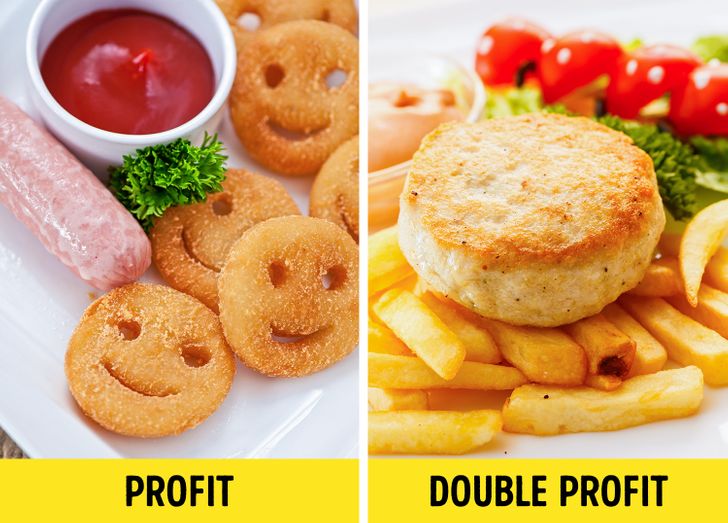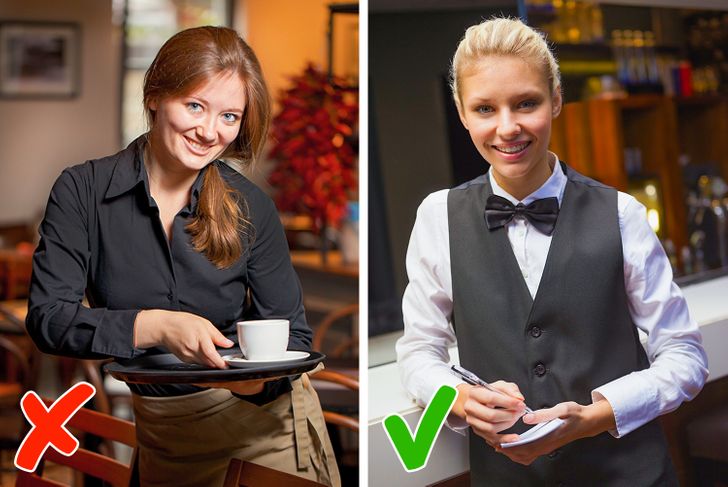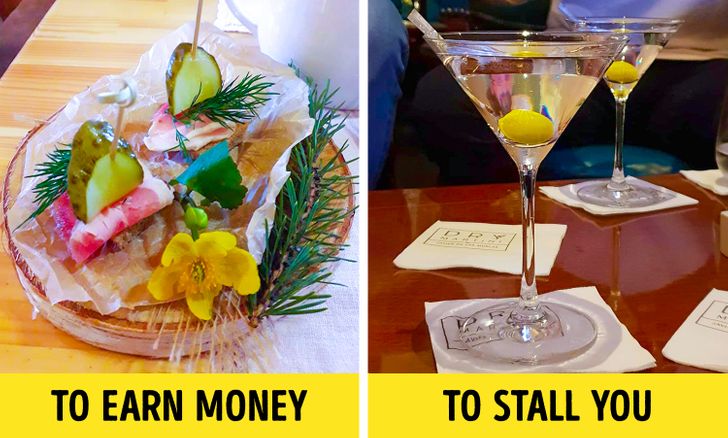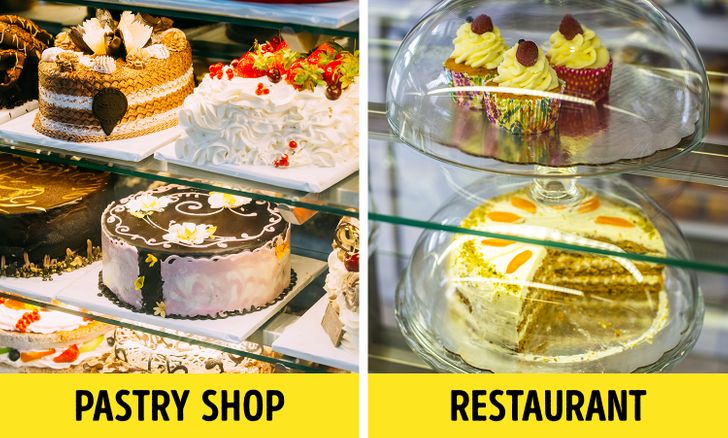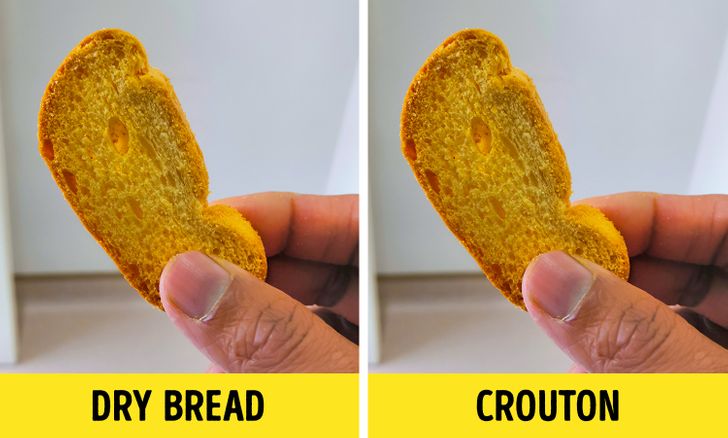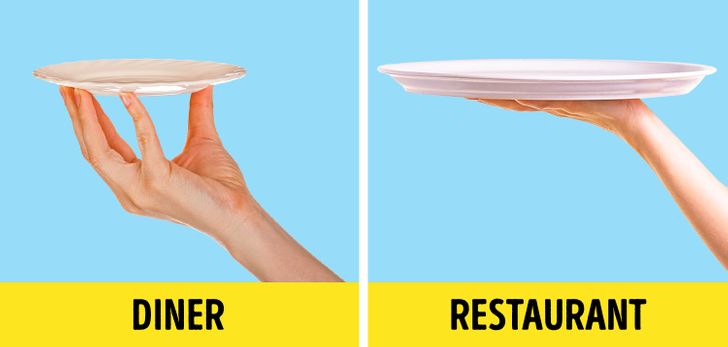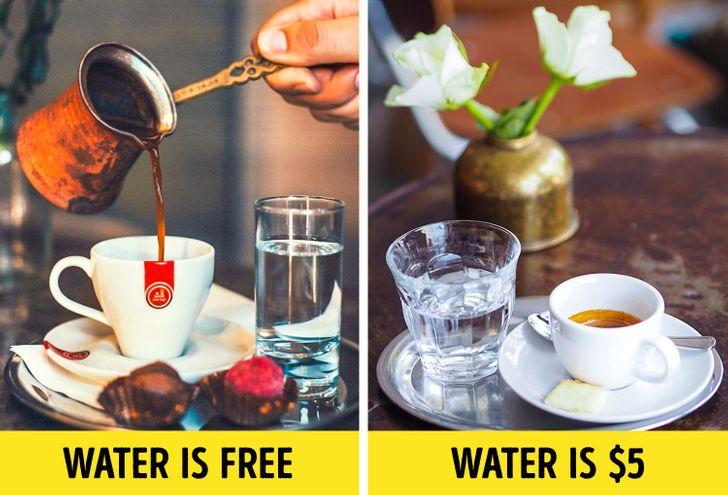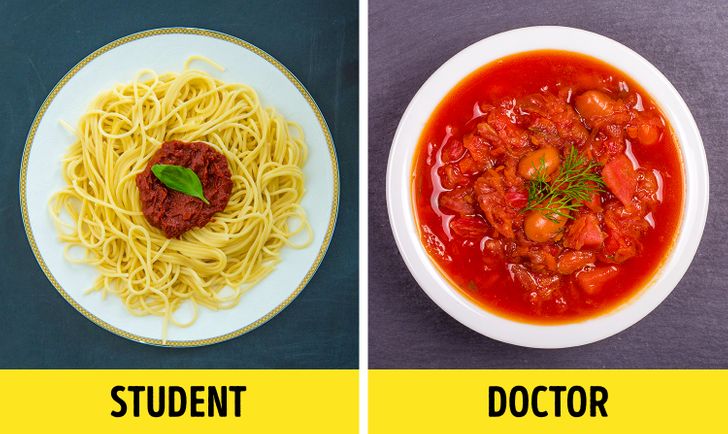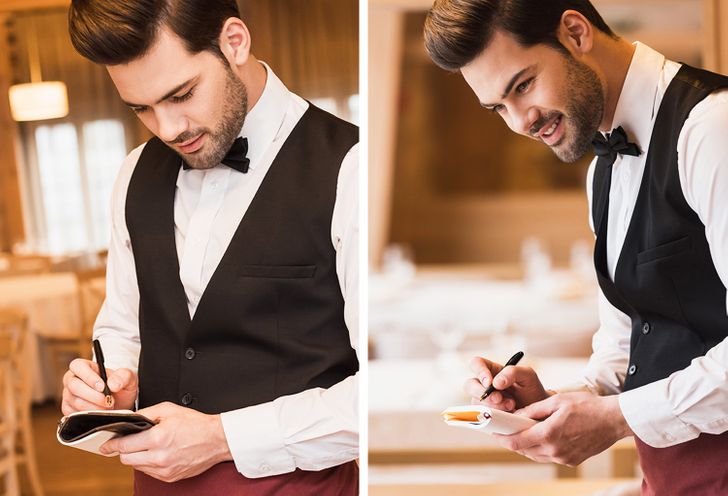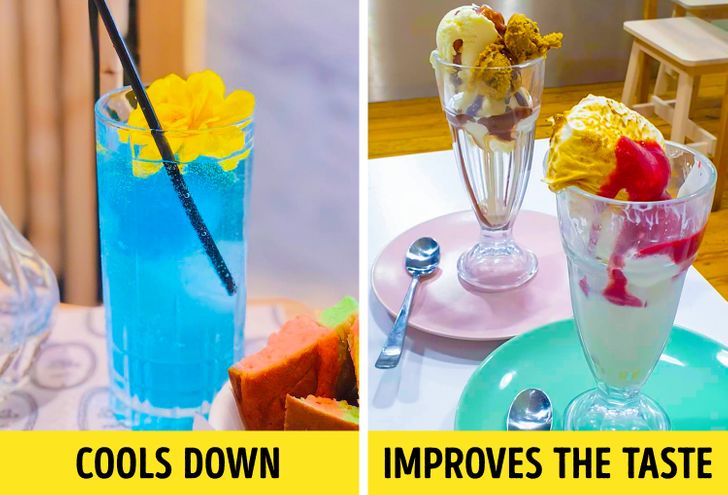ohh. even eating food became a science where everyone wants to control us ?
10+ Things Almost Every Restaurant Does to Trick You
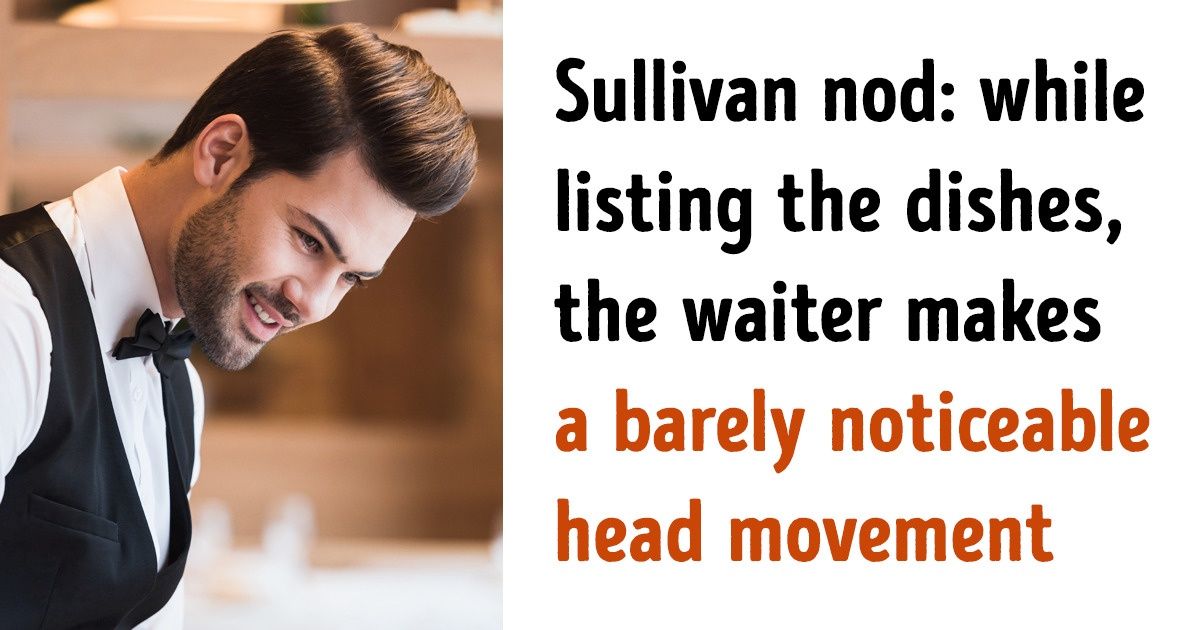
Every industry has its own success secrets, and cafes and restaurants are no exception. As it turns out, there are many methods to subtly make a guest order more dishes, and all the additional treats and confections from the chefs are just other cunning tricks to keep you in the restaurant and push you to order something else.
We at Bright Side have talked to people who work as waiters, bartenders, or even those who have their own restaurants in order to learn more about the behind-the-scenes secrets of eating out.
Tables with a great view are only offered to those who came to have a meal.
The places with a panoramic view of the city or the ocean are always offered to those who come to spend a big amount of money. So, before giving you a seat, the hostess or the waiter will ask you, “Are you going to have a meal?”
If you ask for a table near the sea, but you are only going to order a coffee and a dessert, you will be told that the table is booked. And the next one will be booked too.
There might not be a menu for children, but they offer special discounts for small portions for kids.
There is a reason why in so many restaurants, there is no menu for children. Instead, a caring waiter will offer a child the chance to order something from the regular menu, promising that it will be half the size of the regular serving. And, of course, it will be 1/2 price.
But here is the trick: you will most likely order a drink and a dessert for the child which will be a regular size. A dish with a discount will still earn some money for the restaurant and the bill and the expected tip will be bigger.
There is one reason why waiters are not allowed to let their hair down or wear jewelry and bright makeup.
Hair is never allowed to be worn down, makeup should be very simple, there should be no jewelry, and nails should be cut short and not have any polish on them. This is done in order to prevent guests from feeling that a piece of nail polish, a hair, or an earring may end up on their plate.
Sometimes, people who are very attractive and put-together may even not be hired: guests don’t like it when waiters or bartenders look better than they do.
Free treats from chefs are only given to specific people and at a specific time.
Restaurants often give free appetizers to their guests, but there is a reason why they do it. Appetizers make you want to eat more, so you might order some alcohol and a free dessert after the main course makes you want to order a coffee or a tea. In both cases, this is done to make the guest spend more money. Usually, free food is given to groups of women, since they usually spend more money than men.
And here is another trap: When the restaurant gives you something for free, you are very likely to give a better tip because you feel obligated to reward the staff. But you should know that most of the time, the food you get for free is the food that is very near its expiration date anyway.
In some cafes, there are whole cakes on display, and in others — they are cut. There is a reason why.
In restaurants and cafes, this is the way to create the appearance of a deficit: it seems that at least one person has already bought a piece, so the cake should be good. And if a cut cake is not ordered for a couple of hours, waiters start recommending it to their guests. In the end, it helps to sell out the dessert faster.
And in pastry shops, it’s different, because people come there to buy whole cakes and the choice there is much bigger.
A recipe from the chef and unusual names for regular things are only used to raise the prices for dishes.
Chefs often change the recipe of a familiar dish in order to save a lot on the ingredients. Or, vice versa, they can add a tiny ingredient and increase the price significantly. For example, in carbonara, there may be a couple of grams of Chinese truffles that cost a little, but most people can’t tell the difference between the Chinese and the Italian kind.
Sometimes, ordinary foods are given strange names in order to make guests feel like they are paying for something very exclusive. For example, a piece of dry bread can be called a crouton. Or they bring you surimi strings instead of crab meat.
A waiter brings you a menu and instantly gives you a free lemonade.
Did you accept it? If yes, you are not leaving the place because the lemonade is on the bill now. Guests are often offered lemonade or fresh juice that makes people want to order hot food or a salad because these beverages make us more hungry. Coffee and tea are only associated with dessert.
The size of your plate depends on where you are and what you order.
Cafes often use the Delboeuf illusion to trick our brain and our eyes. If you put food on a small plate so that it seems full, you will get full faster, even if there was a small amount of food. This trick is often used in diners, burger places, and buffets.
Restaurants use the opposite effect: the main course is served on big plates so that you are left feeling hungry and they try to push you into ordering dessert.
You order one drink but end up paying for 2.
You order a cup of coffee that is supposed to be served with a glass of water. But a cunning waiter tries to substitute the glass for a bottle of water from the menu. He asks you if you want mineral water and if you want it still or sparkling. So, if you don’t specify that you want regular tap water with your coffee, you will end up paying for 2 drinks instead of one.
A similar story often happens with tea: you often get a teapot for 2, drink the tea, and ask the waiter for a refill. They just add hot water to the pot without changing the tea inside and then charge you for 2 teapots. But actually, adding hot water is a free service and it is even good when it comes to green tea because it helps it to taste better.
They will never serve some dishes to you because their job is to sell you other dishes from the menu.
This is usually the most expensive dish, located at the top of the menu. People see its price and base their decisions off of it when choosing to order other dishes that now seem much more affordable. If you try to order the top dish, they will tell you that they are out of the ingredients for today.
Based on their customer’s appearance, waiters can tell what they will order.
Experienced waiters can guess your favorite dish or drink by your behavior, your clothing, and your manner of speech. For example, students and girls below the age of 30 love ordering salads with chicken or seafood, plates of pasta, creme soups, chocolate desserts, tea, and latte. Men over 30 often order dishes with chicken, and children love sausages and French fries.
Of course, there are some specific orders. For example, firefighters love very spicy dishes and doctors often order hot soups or something boiled, but very rarely — something fried or salty.
Waiters can control your actions with a smile and with a simple nod.
This method is called the Sullivan nod: when recommending a certain dish to a guest, waiters politely smile, lean a bit forward, and slowly nod their heads. Most people nod in response and agree to order what the waiter offers to them, even if they never planned to do it.
Men are the easiest to trick when it comes to money.
Usually, waiters place the change, so that the bills are in order. But if you mix up the order and put a few big bills in between the small ones, there is a chance that the guest won’t notice that and leave them as a tip for the waiter. The idea is simple: most men on dates or business meetings rarely pay a lot of attention to the change.
Some places take it a step further and just include 10% of the order in the bill. This is illegal, but not all guests know their rights and so people rarely argue with the administration.
Restaurateurs use different materials, shapes, and colors to manipulate the subconscious of the guests.
It is easy to deceive our brain by using tricks connected with how we perceive reality. For example, ice cream tastes better when it is served with a metal spoon, and a green-blue glass makes a drink seem cooler and fresher. Expensive luxury restaurants serve main dishes and delicacies on heavy plates because it makes the food look more high-quality than it really is.
If you think that your brain can’t be tricked this way, try to drink beer from a light, transparent cocktail glass or pour hot cocoa into a wine glass: the perception of the drink will change and it will even taste worse.
What waiters’ tricks have you noticed? Tell us in the comment section below.
Comments
I don't listen to a waiter and I don't agree if they offer me something. I just always say straight what I'm going to eat and wait till they bring me my food
I wouldn't say that waiters who are not allowed to wear heir hair down is a trick. It's mostly the way of making the food safe and hygienic
I know that they trick us with all those colors and smells, but I just can't resist when I see all of the tasty things :(
I don't really see any cheating, just a few minor legal tricks, but most are allowed. As long as a waiter is not intrusive, I think that's okay. Restaurants are having a hard enough time making money and existing, the competition is big and you have to come up with something to make your mark.
...
I don't see anything wrong with giving tables with a good view to people who are enjoying a meal and not only a cup of coffee. It's like always in life, you spend more money, you get more value. It's just as simple as that!!
...
Why is it a "trick" if kids get a half meal and also pay half the price?? The waiter has the instruction to offer this generosity as a nice gesture because there is no regular children's menu. A drink or a dessert for the child you would order anyway, without his offer the menu for the guest would be more expensive first. But since most of the guests accept the offer, the restaurateur loses money first. And now his hope for more tip is predicted as a trick ?? He would be a bad merchant, if he lived with the expectation of how a guest behaves, that way he can't earn any money.
The statement: "A dish with a discount will still earn some money for the restaurant and the bill and the expected tip will be bigger" is so stupid. It would be the same as if I told you in a store, "I just will pay you less for this article, you still earn something on it".
...
"There is one reason why waiters are not allowed to let their hair down or ....." - Yes there is a reason, these are called *hygiene regulations*.
"...guests don’t like it when waiters or bartenders look better than they do" - Think of me what you want, I don't care, but looking at a waiter who doesn't look like 'The Hunchback of Notre Dame' is what I'd perfer, because I want to enjoy my meal!!
...
Giving away free appetizers or drinks is usual in most better restaurants; giving foods fancy names is what the customers expect to feel themselves "special" for that dinner, so why not?? I don't see such things as tricks, I would rather say they have good ideas to satisfy the customers and of course to earn money, that's what they are there for.
...
Your article sounds like a single charge of restaurants, as if they have to apologize for making money.
If you think it's enough to rent a room, put in some tables and chairs, perhaps lay down some tablecloths and menus, offer very ordinary food at ordinary prices and the whole world comes to dinner, then you have a weird worldview.
...
Don't make people so insecure to go to a restaurant and question any gesture or see scams everywhere. People want to enjoy a good meal and relax a bit and the restaurateur wants to offer that to the guests, not more, but not less either.
...
Let the restaurateur do it his way, if people don't like it, the next restaurant is just around the corner!!
Related Reads
An Artist Helps Us See What 13 Famous People Would Look Like Today
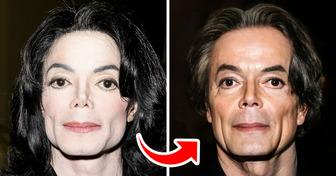
15 Small Interior Design Details That Make Our Home Look Old-Fashioned
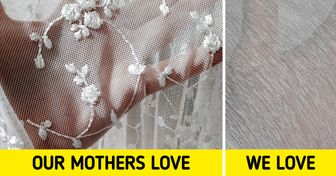
I Refused to Do Extra Work, and HR Tried to Punish Me
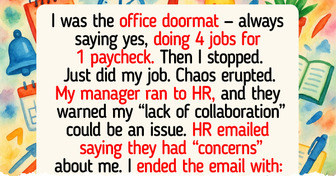
I Demanded a Nursing Room at Work—Now HR Is Involved

14 People Who Walked Straight Into Awkward Moments

16 Moments That Remind Us to Stay Kind Even If the World Turns Ice Cold
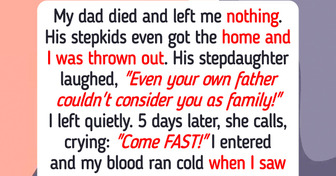
I Refuse to Keep Supporting My Daughter and Her 5 Kids for Free

11 Stories Prove It Takes a Real Superpower to Handle Rude Customers
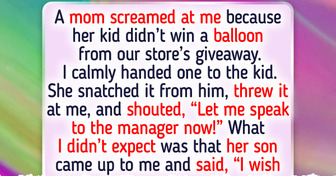
I Refused to Stay After My Husband Secretly Spoiled His Daughter—Then I Heard the Truth

I Wasn’t Invited to My Son’s Baby Reveal, and It Led to a Painful Discovery
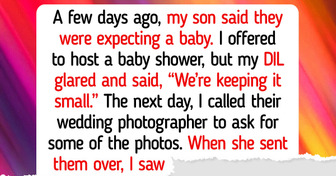
15+ Raw Stories About Jealousy That Can Leave You Speechless

I Refuse to Sell My House for My Jobless Son-in-Law
